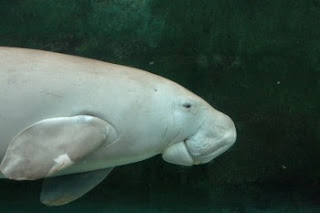How many characters on television do you watch and think to yourself are true red, white and blue Americans. More than a few wouldn't you say? Well, it may come as a surprise to you that some of them are delivered thanks to the talents of non-American actors. Here's a small list.

Actor: Ryan Reynolds
Born on: October 23 1976
Nationality: Canadian
Seen on such shows as: Two guys and a girl, as Berg.
Actor: Minnie Driver
Born on: January 31, 1970
Nationality: British
Seen on such shows as: The Riches, as Dahlia Malloy / Cherien Rich; and more.
Actor: Damien Lewis
Born on: February 11 1971
Nationality: British
Seen on such shows as: Life, as Charlie Crews; Homeland, as Nicholas Brody; and more.

Actor: Andrew Lincoln
Born on: September 14 1973
Nationality: British
Seen on such shows as: The Walking Dead, as sheriff Rick Grimes; and more.
Actor: Michael Ironside
Born on: February 12, 1950
Nationality: Canadian
Seen on such shows as: Smallville, as General Sam Lane.
Actor: Alan Dale
Born on: May 6 1947
Nationality: New Zealander
Seen on such shows as: The O.C, as Caleb Nichol; Ugly Betty, as Bradford Meade; Lost, as Charles Widmore; and more.

Actor: Hugh Laurie
Born on: June 11 1959
Nationality: British
Seen on such shows as: House, as doctor Gregory House.

Actor: Idris Elba
Born on: September 6 1972
Nationality: British
Seen on such shows as: The Wire, as Stringer Bell; The Office, as Charles Miner; and more.
Actor: Stephen Moyer
Born on: October 11 1969
Nationality: British
Seen on such shows as: True Blood, as Bill Compton; The Starter Wife, as Sam; and more.
Actor: Christopher Plummer
Born on: December 13, 1929
Nationality: Canadian
Seen on such shows as: Counterstrike, as Alexander Addington.
Actor: William Shatner
Born on: March 22, 1931
Nationality: Canadian
Seen on such shows as: Boston Legal, as Denny Crane; The Practice, as Denny Crane; Star Trek (TV series)
Captain James T. Kirk; and more.
Actor: Anna Paquin
Born on: July 24 1982
Nationality: New Zealander, Canadian
Seen on such shows as: True Blood, as Sookie Stackhouse.
Actor: David Keith McCallum
Born on: September 19, 1933
Nationality: British
Seen on such shows as: J.A.G, as Dr. Donald Mallard; NCIS, as Dr. Donald Mallard; and more.
Actor: Sarah Chalke
Born on: 27 August 1976
Nationality: Canadian
Seen on such shows as: Scrubs, as Dr. Elliot Reid; Cougar Town, as Angie; and more.
Actor: Yvonne Strahovski
Born on: July 30, 1982
Nationality: Australian
Seen on such shows as: Chuck, as Sarah Walker; and more.

Actor: Martin Henderson
Born on: October 8 1974
Nationality: New Zealander
Seen on such shows as: Off the Map, as Dr Ben Keeton.
Actor: Anthony LaPaglia
Born on: January 31 1959
Nationality: Australian
Seen on such shows as: Without a Trace, as Jack Malone; Frasier, as Simon Moon; and more.
Actor: Colin Fergusson
Born on: July 22, 1972
Nationality: British/Canadian
Seen on such shows as: Eureka, as Sheriff Jack Carter; and more.

Actor: Poppy Montgomery
Born on: June 19 1975
Nationality: Australian
Seen on such shows as: Without a Trace, as Samantha Spade; Unforgettable, as Carrie Wells; and more.

Actor: Alexander Skaarsgard
Born on: August 25 1976
Nationality: Swedish
Seen on such shows as: Generation Kill, as Sgt. Brad 'Iceman' Colbert; True Blood, as Eric Northman; and more.
Actor: Julian McMahon
Born on: July 27 1968
Nationality: Australian
Seen on such shows as: Nip/Tuck, as Doctor Christain Troy; Charmed, as Cole Turner; and more.
Actor: Kristin Kreuk
Born on: December 30 1982
Nationality: Canadian
Seen on such shows as: Smallville, as Lana Lang; Chuck, as Hannah; and more.

Actor: Michael Fassbender
Born on: April 2 1977
Nationality: Irish
Seen on such shows as: Band of Brothers, as Sgt. Burton 'Pat' Christenson.
Actor: Jim Carrey
Born on: January 17, 1962
Nationality: Canadian
Seen on such shows as: In Living Color, playing various roles.
Actor: Cliff Curtis
Born On: July 27, 1968
Nationality: New Zealander
Seen on such shows as: Trauma, as Reuben 'Rabbit' Palchuk.

Actor: Anna Friel
Born on: July 12, 1976
Nationality: British
Seen on such shows as: Pushing Daisies, as Charlotte 'Chuck' Charles; and more.
Actor: Rachael Griffiths
Born on: December 18, 1968
Nationality: Australian
Seen on such shows as: Brothers and Sisters, as Sarah Walker; Comanche Moon, as Inez Scull; and more.
Actor: Mark Addy
Born on: January 14, 1964
Nationality: British
Seen on such shows as: Still Standing, as Bill Miller.

Actor: Rose Byrne
Born on: July 24, 1979
Nationality: Australian
Seen on such shows as: Damages, as Ellen Parsons.
Actor: Matthew Rhys
Born on: November 8 1964
Nationality: British
Seen on such shows as: Brothers and sisters, as Kevin Walker; and more.
Actor: Jason O'Mara
Born on: Irish
Nationality: Irish
Seen on such shows as: In Justice, as Charles Conti; Life on Mars, as Detective Sam Tyler; Terra Nova
Jim Shannon; and more.
Actor: Charlie Hunnam
Born on: April 10 1980
Nationality: British
Seen on such shows as: Sons of Anarchy, as Jackson 'Jax' Teller; and more.
Actor: Kim Cattrall
Born on: August 21 1956
Nationality: British, Canadian
Seen on such shows as: Sex & the city, as Samantha Jones; and more.

Actor: Will Arnett
Born on: May 4, 1970
Nationality: Canadian
Seen on such shows as: Up All Night, as Chris Brinkley; 30 Rock, as Devon Banks; Arrested Development, as George 'Gob' Bluth II; and more.
Actor: Saffron Burrows
Born on: October 22 1972
Nationality: British
Seen on such shows as: My Own Worst Enemy, as Dr. Norah Skinner
Actor: Jamie Bamber
Born on: April 3 1973
Nationality: British
Seen on such shows as: Battlestar Galactica, as Lee 'Apollo' Adama; Body of Proof, as Aiden Wells; and more.

Actor: Ryan Gosling
Born on: November 12, 1980
Nationality: Canadian
Seen on such shows as: Breaker High, as Sean Hanlon; Flash Forward, as Scott Stuckey.
Actor: Arnold Vosloo
Born on: June 16 1962
Nationality: South African
Seen on such shows as: Chuck, as Vincent; and more.

Actor: Michael J. Fox
Born on: June 9, 1961
Nationality: Canadian
Seen on such shows as: Family Ties, as Alex P. Keaton; Spin City, as Mike Flaherty.
Actor: Zoe Bell
Born on: November 17 1978
Nationality: New Zealander
Seen on such shows as: Lost, as Regina.

Actor: Karl Urban
Born on: June 7 1972
Nationality: New Zealander
Seen on such shows as: Comanche Moon, as Woodrow F. Call.

Actor: Isla Fisher
Born on: February 3, 1976
Nationality: Australian
Seen on such shows as: Bored to Death, as Rose.
Actor: Michael Cera
Born on: June 7 1988
Nationality: Canadian
Seen on such shows as: Arrested Development, as George-Michael Bluth; and more.
Actor: Missy Peregrym
Born on: June 16 1982
Nationality: Canadian
Seen on such shows as: Reaper, as Andi Prendergast; Rookie Blue, as Andy McNally; Heroes, as Candice Wilmer; and more.
Actor: Ed Westwick
Born on: June 27 1987
Nationality: British
Seen on such shows as: Gossip Girl, as Chuck Bass; and more.
Actor: Erica Durance
Born on: June 21, 1978
Nationality: Canadian
Seen on such shows as: Smallville, as Lois Lane; and more.
Actor: Anna Torv
Born on: June 15, 1978
Nationality: Australian
Seen on such shows as: Fringe, as Olivia Dunham; and more.
Actor: Kim Coates
Born on: January 2 1959
Nationality: Canadian
Seen on such shows as: Entourage, as Carl Ertz; Sons of Anarchy, as Alex 'Tig' Trager; and more.
Actor: Marianne Jean-Baptiste
Born on: April 26, 1967
Nationality: British
Seen on such shows as: Without a Trace, as Vivian Johnson; and more.
Actor: James Frain
Born on: March 14 1968
Nationality: British
Seen on such shows as: The Cape, as Peter Fleming / Chess; and more.
Actor: Simon Baker
Born on: July 30 1969
Nationality: Australian
Seen on such shows as: The mentalist, as Patrick Jane; and more.
Actor: Maxwell Caulfield
Born on: November 23, 1959
Nationality: British
Seen on such shows as: Strip Mall, as Rafe Barrett.
Actor: Amanda Tapping
Born on: August 28 1965
Nationality: Canadian, British
Seen on such shows as: Stargate: Atlantis, as Colonel Samantha Carter; Stargate SG-1, as Major Samantha Carter; and more.
Actor: John Mahoney
Born on: 20 June 1940
Nationality: originally British
Seen on such shows as: Frasier, as Martin Crane; Hot in Cleveland, as Roy; and more.
Actor: Gabrielle Anwar
Born on: February 4 1970
Nationality: British
Seen on such shows as: Burn Notice, as Fiona Glenanne.
Actor: Alex O'Loughlin
Born on: August 24 1976
Nationality: Australian
Seen on such shows as: Hawaii Five-0, as Steve McGarrett; The Shield, as Detective Kevin Hiatt; and more.

Actor: Ryan Kwanten
Born on: November 28, 1976
Nationality: Australian
Seen on such shows as: True Blood, as Jason Stackhouse; and more.
Actor: Portia de Rossi
Born on: January 31, 1973
Nationality: Australian
Seen on such shows as: Nip/Tuck, as Olivia Lord; Better Off Ted, as Veronica Palmer; Arrested Development, as Lindsay Bluth Fünke.
Actor: Emelie de Raven
Born on: December 27, 1981
Nationality: Australian
Seen on such shows as: Roswell, as Tess Harding; and more.

Actor: Lucy Lawless
Born on: March 29 1968
Nationality: New Zealander
Seen on such shows as: Xena: Warrior Princess, as Xena; Battlestar Galactica, as D'Anna Biers; No Ordinary Family, as Helen Burton; and more.
Actor: Toni Collette
Born on: November 1, 1972
Nationality: Australian
Seen on such shows as: United States of Tara, as Tara Gregson.
Actor: Henry Ian Cusick
Born on: April 17, 1967
Nationality: Scottish
Seen on such shows as: Scandal, as Stephen Finch; and more.

Actor: Grant Bowler
Born on: July 18, 1968
Nationality: New Zealander
Seen on such shows as: Ugly Betty, as Connor Owens; True Blood, as Cooter.
Actor: Lena Headey
Born on: October 3 1972
Nationality: British
Seen on such shows as: Terminator: The Sarah Connor Chronicles, as Sarah Connor; and more.
Actor: Dominic West
Born on: October 15 1969
Nationality: British
Seen on such shows as: The Wire, as Detective James 'Jimmy' McNulty; and more.
Actor: Jay Baruchel
Born on: April 9, 1982
Nationality: Canadian
Seen on such shows as: Numb3rs, as Oswald Kittner; and more.
Actor: Evangeline Lilly
Born on: August 3, 1979
Nationality: Canadian
Seen on such shows as: Lost, as Kate Austen.

Actor: Gregory Smith
Born on: July 6, 1983
Nationality: Canadian
Seen on such shows as: Everwood, as Ephram Brown; Rookie Blue, as Dov Epstein; and more.
Actor: Melanie Lynsky
Born on: May 16, 1977
Nationality: New Zealander
Seen on such shows as: Two and a Half Men, as Rose.









































